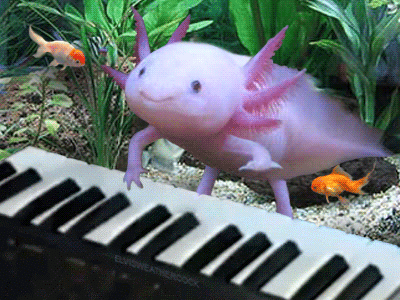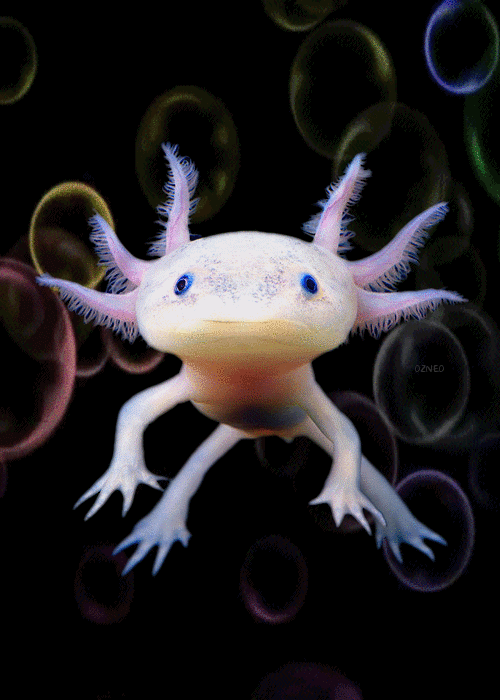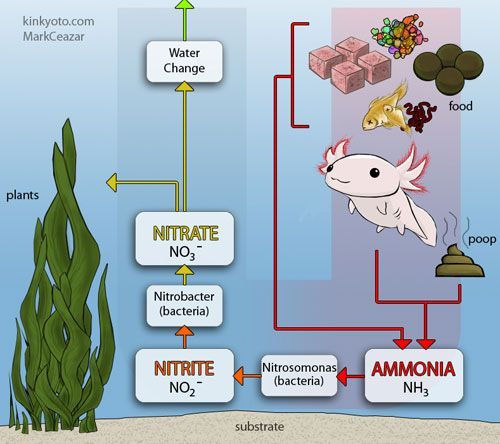Axolotls
😊 Have The Best Smiles 😊


😊 Have The Best Smiles 😊


Axolotls are Masters of Regeneration
😊 😍 😊
Meet the Axolotl, a Mexican Salamander that scientists and the internet alike love for their amazing ability to regenerate limbs, and probably for that derpy smile.
👇 📺 👇
😊 😍 😊
This little animal might have the world's cutest smile
👇 📺 👇
😍 😍 😍

Axolotl
My little Pet Alien
😍 😍 😍

Axolotl
My little Pet Alien
👇 📺 👇😍 😊 😍😊 😍 😊
Cool Cute Aquarium Mexican Salamander
Cool Cute Aquarium Mexican Salamander
👇 📺 👇
😊 😍 😊
All about Keeping Axolotls
Mexican walking fish
(best not to keep these on gravel)
http://life-of-la.blogspot.com/2014_06_01_archive.html
Axolotl
also known as Mexican salamander or Mexican walking fish, is a neotenic
salamander, closely related to the tiger salamander.
Although the axolotl is colloquially known as a "walking fish", it is not a fish, but an amphibian.
The species originates from numerous lakes, such as Lake Xochimilcounderlying Mexico City.
Axolotls are unusual among amphibians in that theyreach adulthood without undergoing metamorphosis.
Instead of developing lungs and taking to land, the adults remain aquatic and gilled.
A sexually mature adult axolotl, at age 18–24 months, ranges in length from 15–45 cm,
although a size close to 23 cm is most common and greater than 30 cm is rare.
Their
heads are wide, and their eyes are lidless. Their limbs are
underdeveloped and possess long, thin digits. Males are identified by
their swollen cloacae lined with papillae, while females are noticeable
for their wider bodies full of eggs. Three pairs of external gill
stalks originate behind their heads and are used to move oxygenated
water. The external gill rami are lined with filaments to increase
surface area for gas exchange. Four gill slits lined with gill rakers
are hidden underneath the external gills. Axolotls have barely visible
vestigial teeth, which would have developed during metamorphosis.
The
primary method of feeding is by suction, during which their rakers
interlock to close the gill slits. External gills are used for
respiration, although buccal pumping may also be used to provide oxygen
to their lungs. Axolotls have four different colours, including two
mutant colors. The two normal colors are "wildtype" and melanoid. The
two mutant colors are leucistic (pale pink with black eyes)
and albino (golden, tan or pale pink with pink eyes).
😊 😍 😊
All about Keeping Axolotls
Mexican walking fish
(best not to keep these on gravel)
Though some people have Axolotls successfully on gravel for years. Please be warned that it can be a problem. You are better with a fine sand or a large pebble
👇 📺 👇
Studying
more pet ads on Craigslist last night I came across an ad selling
Axolotls. What are Axolotls you say?
Just the cutest little happiest
Mexican salamander you have ever seen! They live up to 10 years, are
relatively simple to take care of, and look awesome. Also, they were
$10-$25, buy two get one free. Bonus, these ones had the gene that
makes them glow under black lights. Double awesome. THEN I read that
they regenerate limbs!
Could they get any more fascinating? Of course
then I had to research them more and found out that yes, those are
external gills, they are native to Mexico swamps and were a staple in
the Aztec diet.
Meet my Axolotls
👇 📺 👇





1 comment:
I like your blog impressive!
Read this basic information about animals and the specific types of food they eat at What do animals eat?
Post a Comment